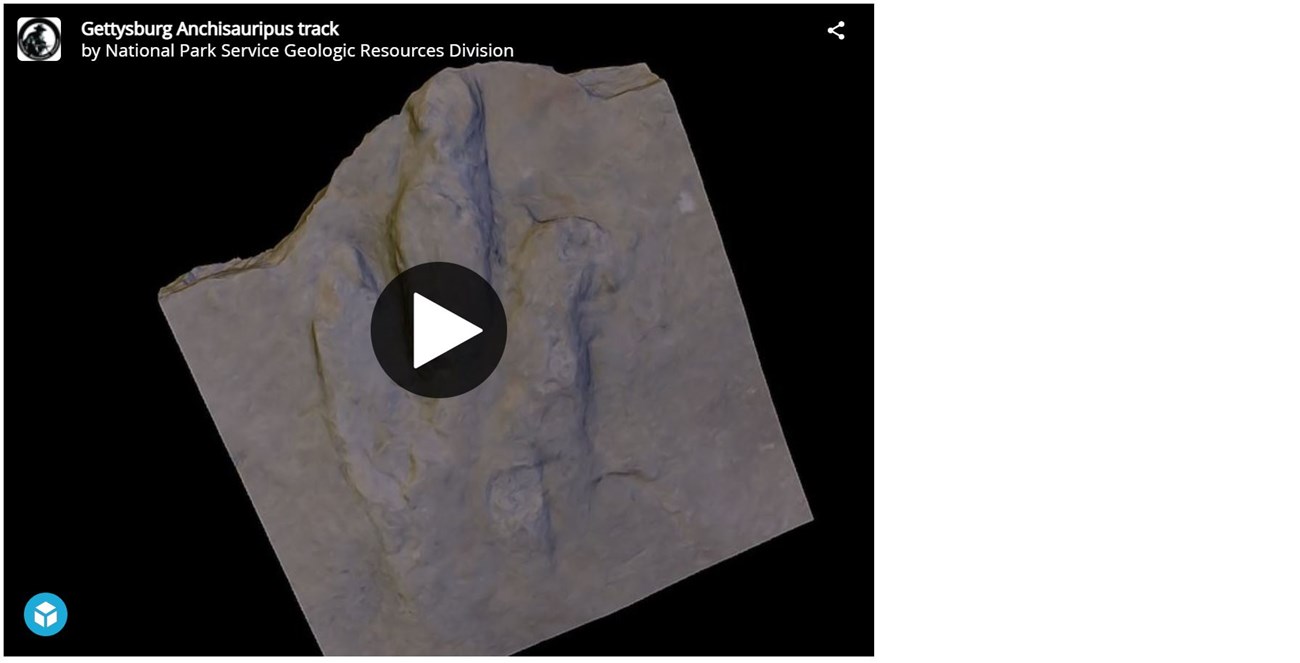Part of a series of articles titled Photogrammetry Applications and Examples.
Article
Paleontological Modeling Example—'Anchisauripus' track
Fossil vertebrate tracks are a valuable scientific resource, are of great interest to the general public and are present in at least 30 NPS managed areas (Santucci et al., 2006; 2009). Vertebrate tracks are sources of diagnostic information such as the morphology of pes and manus impressions for extinct taxa. Because these types of fossils are valuable for the scientific information, they often represent challenges for preservation when maintained in situ; often at risk from weathering and anthropogenic impacts (Santucci et al., 2009). As such, these fossils are potential targets for vandalism, including poor attempts to make molds or casts, and loss from unauthorized collection (Santucci, 2002). This track from Gettysburg was modeled using photogrammetric methods and then printed using a 3D-printer.
3D Fossil Anchisauripus track
Gettysburg National Military Park, Pennsylvania
Anchisauripus track within quarried block used by CCC in the 1930s.
Last updated: April 30, 2021

